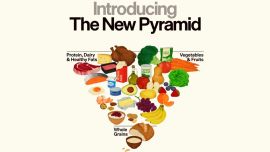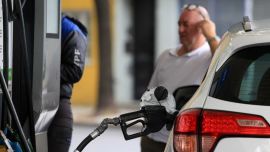Argentina’s poverty rate rose to 42 percent in the second half of 2020, pushed higher by the country’s three-year recession and the coronavirus crisis.
The figure, released by the INDEC national statistics bureau on Wednesday, means that some 19 million people in Argentina are considered poor. It is the country’s highest rate since 2004, emphasizing the dramatic impact of the global coronavirus pandemic.
The number of citizens living beneath the poverty line rose 1.1 percentage points from the first half of 2020. Gross domestic product nosedived 9.9 percent in 2020, the worst annual decline since the historic collapse in 2002, driven by strict lockdown measures.
According to the bureau’s calculations, based on a study of 31 large cities across the country, more than 4.7 million people or 10.5 percent of the population were living in extreme poverty at the end of last year. Approximately 31.6 percent of households – or some 12 million people – were below the poverty line, unable to afford a basket of basic food and essential items, concluded INDEC.
Poverty is defined as the inability to afford a basket of basic food and services valued at some US$600 for a family of four. People who cannot afford a basic basket of only food – about US$250 for a family – are classified as indigent.
Runaway inflation, a severe economic collapse amid the coronavirus pandemic, rising unemployment and the shuttering of thousands of firms in urban centres had a strong impact on the population's economic wellbeing, INDEC found.
Around three million people slipped into poverty compared to the previous year, with the rate rising 1.1 percent from the 40.9 percent rate registered at the end of the Mauricio Macri administration’s time in office.
Year-on-year the comparison is even more devastating: a 6.5 percentage point rise from 2019 to 2020.
The spike in poverty has exacerbated inequalities. In wealthier Buenos Aires City, 16 percent of residents live in poverty, while in the Conurbano, the densely populated ring that surrounds Buenos Aires City, 51 percent are considered poor, with 15.2 percent classified as destitute.
The most impoverished region in Argentina in the second half of 2020 was Gran Resistencia in Chaco Province, where 53.6 percent were considered poor. Concodia, in Entre Ríos Province recorded a rate of 49.5 percent.
Sounding the alarm, INDEC warned that poverty was unfairly afflicting the country's youngest citizens. According to the bureau, 57.7 percent of children aged under 14, some 6.3 million people, are now considered poor.
"The highest growth in relation to the previous semester was observed in this group with an increase of 1.4 pp [percentage points]; and in the group [aged] from 30 to 64, with a rise of 1.0 pp. The total percentage of poor people for the groups aged 15 to 29 years and from 30 to 64 years was 49.2 percent and 37.2 percent, respectively," read the report.
Reacting to the report, Labour Minister Claudio Moroni described its findings as "a disaster."
"What we have to see is the way out. And the I think the way out is to have a developmental model that creates employment," he said.
Argentina spent heavily on Covid welfare programmes, printing an estimated 1.7 trillion pesos (US$18.5 billion) to cover pandemic aid, according to Bloomberg.
Moroni said the government's welfare payments "serve for situations like this," though he stressed "they are not an exit mechanism [out of poverty."
The head of the labor portfolio said the country had suffered "we had a loss of formal employment of almost four points" last year, but that things would improve in the coming months.
"January 2021 was the first month of month-on-month growth in formal employment," he stressed, adding that informal employment "fell during the pandemic, but is now recovering a lot."
Argentina's highest-ever poverty rate of 58 percent was recorded at the end of 2002, during the 2001-2002 economic crisis.
– TIMES with agencies























Comments